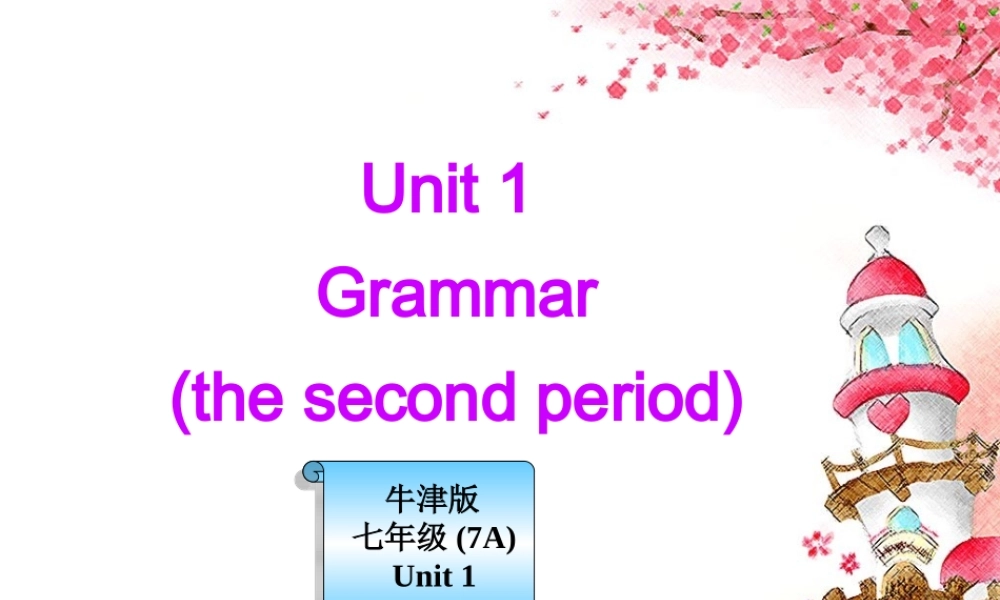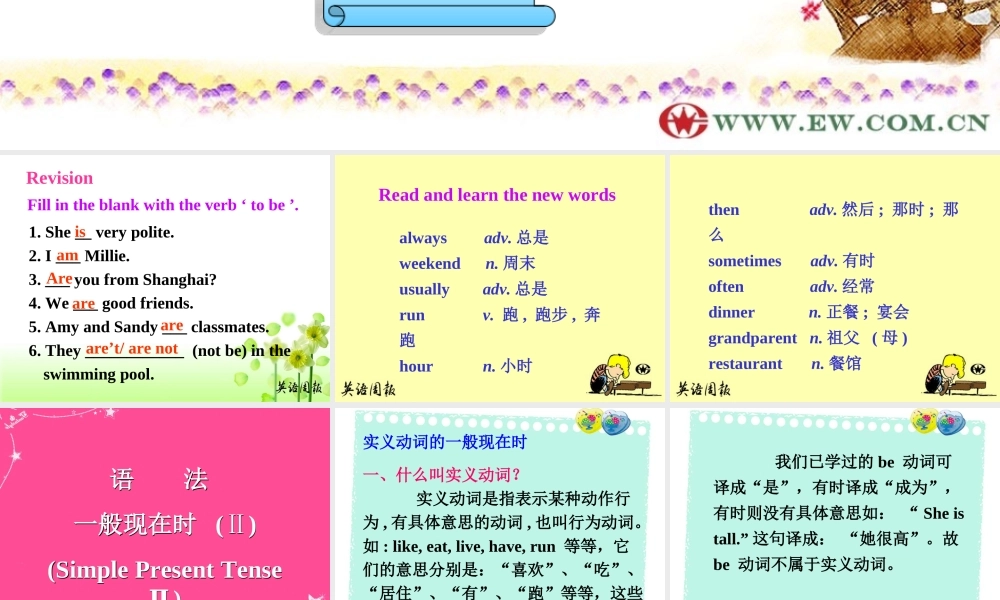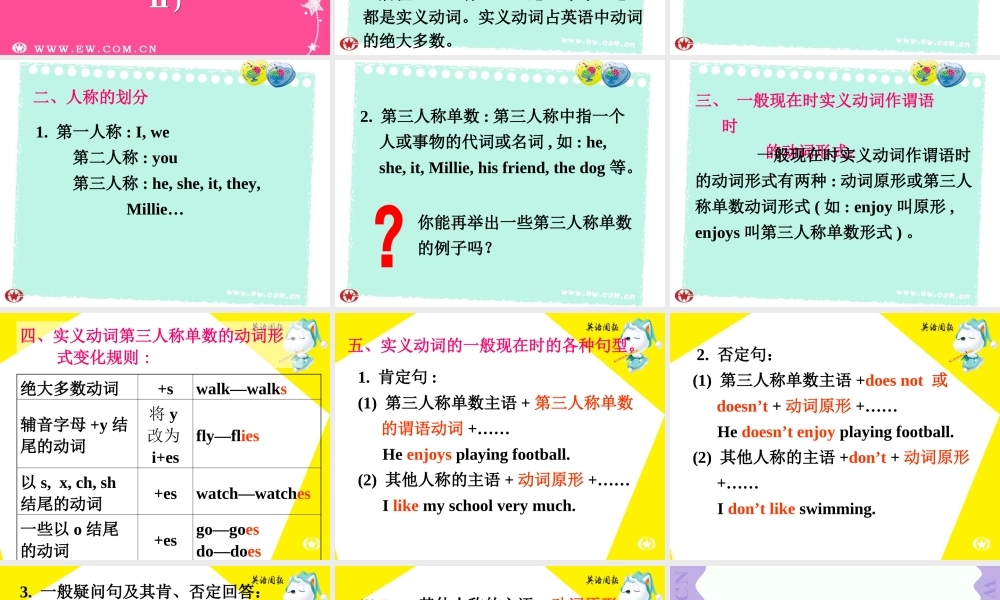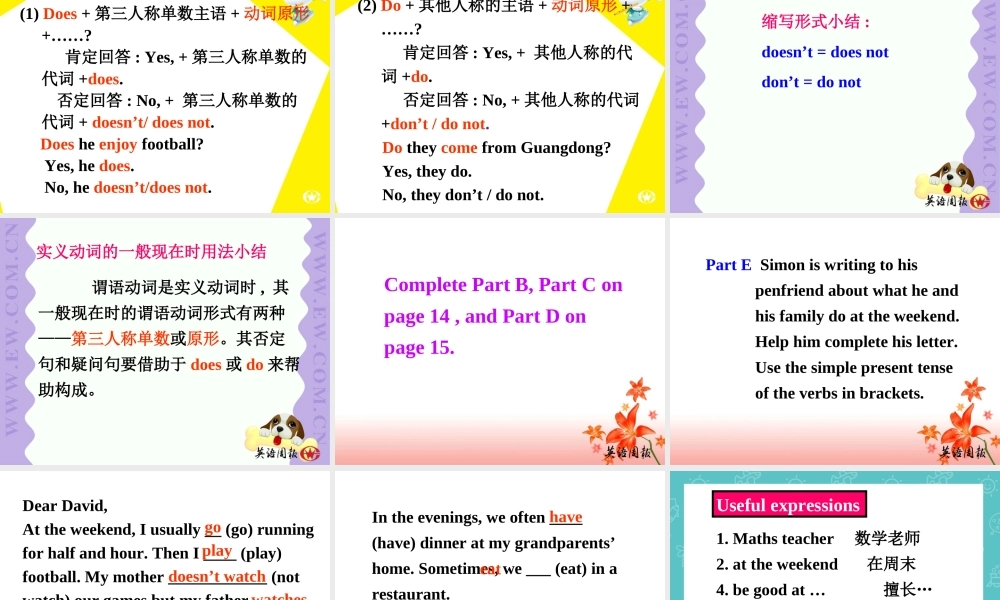Unit 1 Grammar(the second period) 牛津版七年级 (7A) Unit 1RevisionFill in the blank with the verb ‘ to be ’.1. She __ very polite.2. I ___ Millie.3. ___ you from Shanghai?4. We ___ good friends.5. Amy and Sandy ___ classmates.6. They ____________ (not be) in the swimming pool.is am Areareareare’t/ are notRead and learn the new wordsalways adv. 总是weekend n. 周末usually adv. 总是run v. 跑 , 跑步 , 奔跑hour n. 小时then adv. 然后 ; 那时 ; 那么sometimes adv. 有时often adv. 经常dinner n. 正餐 ; 宴会grandparent n. 祖父 ( 母 ) restaurant n. 餐馆语 法 一般现在时 (Ⅱ)(Simple Present Tense Ⅱ )语 法 一般现在时 (Ⅱ)(Simple Present Tense Ⅱ )实义动词的一般现在时一、什么叫实义动词? 实义动词是指表示某种动作行为 , 有具体意思的动词 , 也叫行为动词。如 : like, eat, live, have, run 等等,它们的意思分别是:“喜欢”、“吃”、“居住”、“有”、“跑”等等,这些都是实义动词。实义动词占英语中动词的绝大多数。 我们已学过的 be 动词可译成“是”,有时译成“成为”,有时则没有具体意思如: “ She is tall.” 这句译成: “她很高”。故be 动词不属于实义动词。二、人称的划分1. 第一人称 : I, we 第二人称 : you 第三人称 : he, she, it, they, Millie…2. 第三人称单数 : 第三人称中指一个人或事物的代词或名词 , 如 : he, she, it, Millie, his friend, the dog 等。你能再举出一些第三人称单数的例子吗? 三、 一般现在时实义动词作谓语时 的动词形式: 一般现在时实义动词作谓语时的动词形式有两种 : 动词原形或第三人称单数动词形式 ( 如 : enjoy 叫原形 , enjoys 叫第三人称单数形式 ) 。 四、实义动词第三人称单数的动词形 式变化规则 :绝大多数动词+swalk—walks辅音字母 +y 结尾的动词将 y改为i+esfly—flies以 s, x, ch, sh 结尾的动词+eswatch—watches一些以 o 结尾的动词+esgo—goesdo—does1. 肯定句 :(1) 第三人称单数主语 + 第三人称单数的谓语动词 +…… He enjoys playing football.(2) 其他人称的主语 + 动词原形 +…… I like my school very m...




